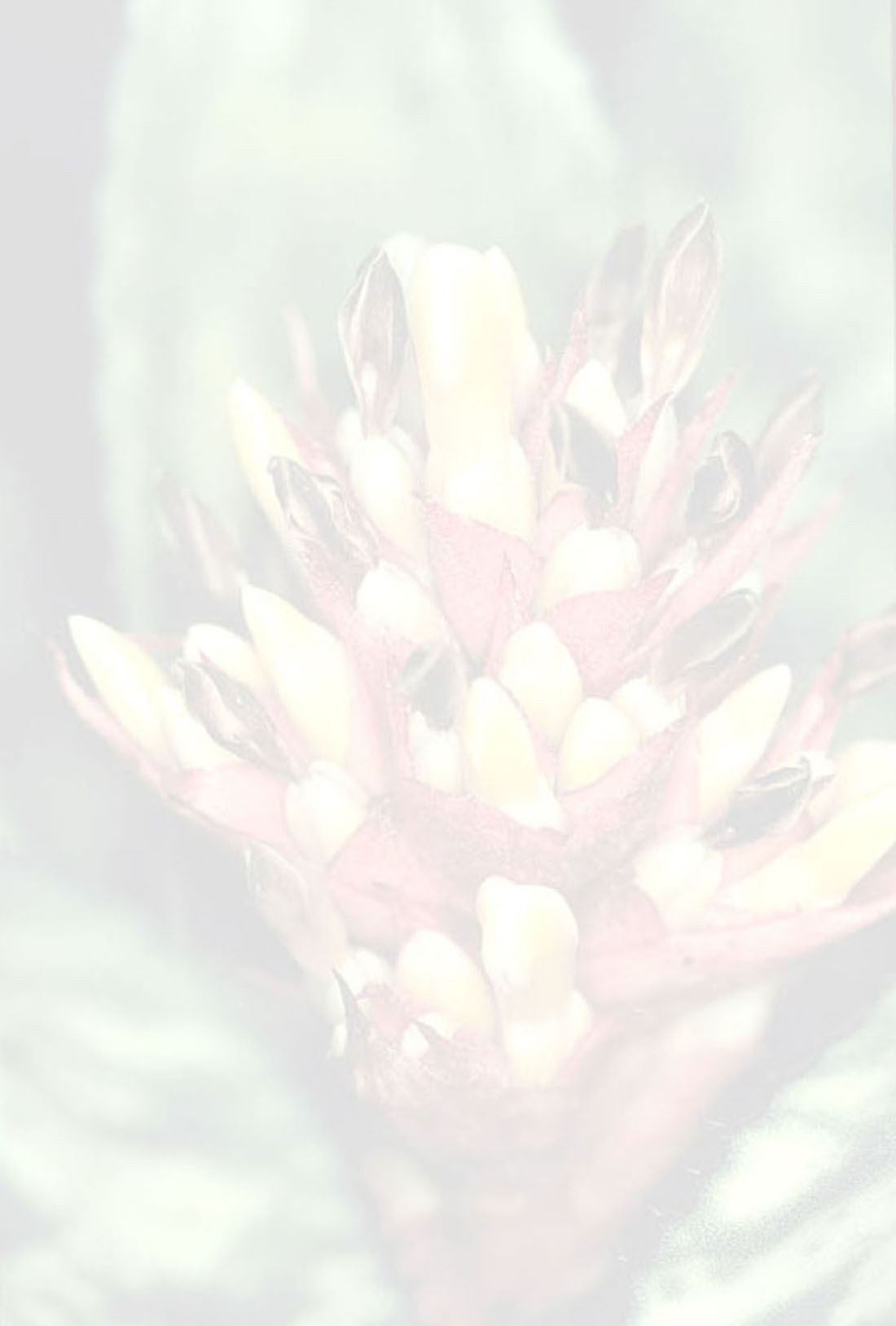


plant terrestrial or epiphytic, flowering 50–65 cm tall, propagating by short basal shoots. leaves ca 12, coriaceous, forming a funnelform rosette; sheath ovate-elliptic, 10–15 x 7–10 cm, densely white-lepidote, abaxially pale castaneous at base and green elsewhere, adaxially purple; blade sublinear, slightly if at all narrowed toward the base, 30–65 x 4.5–6.5 cm, densely white-lepidote mainly abaxially, green to reddish toward margins and apex, apex acute to acuminate and distinctly apiculate, apiculus narrowly triangular, pungent, 0.7–0.8 mm long, margins densely to subdensely spinose, spines subtriangular-uncinate, straight to prevailing antrorse, pale brown, 0.3–1 x 0.5 mm, 2–8 mm apart. inflorescence: peduncle erect, 18–33 cm long, 0.6–0.7 cm in diameter, subdensely white-sublanate with fimbriate trichomes, greenish; peduncle bracts narrowly lanceolate, apex acuminate, 5–6 x 1–1.5 cm, greenish to stramineous, inconspicuously and sparsely white-lepidote, nerved, spinulose near the apex to entire, erect equaling to slightly exceeding the internodes, partially exposing the peduncle; fertile part narrowly particulate, once-branched, 13–26 (34) cm long, 13–18 (26) cm in diameter, shorter to exceeding the leaves; primary bracts resembling the upper peduncle bracts but gradually smaller and narrower, distinctly shorter than the branches but exceeding the stipes, spreading, stramineous, entire; branches 5 to 8 (11), laxly to subdensely arranged, cylindrical, spreading to distinctly reflexed, (7-) 15- to 25-(30) -flowered, 2.3–3 cm in diameter (excluding the petals), the basal ones 5–12 cm long, densely flowered, stipes 1–1.5 cm long, naked, rachis straight, sparsely white-sublanate to glabrescent, greenish to reddish, 2–3 mm in diameter, somewhat sulcate toward the apex, the terminal branch slightly longer than the lateral ones, 7–14 cm long, 23- to 40-flowered; floral bracts broadly ovate to ovate-triangular, acuminate-caudate, soon castaneous-stramineous, 3–6 x 2–3 mm, entire, about equaling to shorter than the ovary, finely nerved. flowers 18–22 mm long (when petals extended), sessile, densely to subdensely and polystichously arranged, spreading to distinctly reflexed, odorless; sepals strongly asymmetrical, 6–8 x 4–6, including the 1–1.2 mm apical suberect mucro, connate at base for 1–1.5 mm, inconspicuously and sparsely white lepidote to glabrous, green toward the base to pale rose mainly near the apex; petals lanceolate, acuminate, 11–13 x 2.5–3 mm, suberect-spreading to recurved toward the apex at anthesis, white, free, naked, bearing inconspicuous longitudinal callosities slightly exceeding the filaments. stamens: filament 6–7 mm long, the antepetalous ones adnate to the petals for 3–5.5 mm, the antesepalous ones free; anther 3–4 mm long, base obtusely sagittate, apex apiculate, fixed near the middle; pollen broadly ellipsoid, biporate, apertures small, exine minutely reticulate, muri thickened. pistil: stigma conduplicate-spiral, sub-cylindrical to ellipsoidal, lobes inconspicuously crenulate, ca 1.5 mm long, white; ovary terete, subclavate, 5–7 x 4 mm, sparsely lepidote, trichomes long fimbriate, green; placentation apical; ovules obtuse to obtusely apiculate; epigynous tube inconspicuous. fruits slightly enlarged from the ovary, dark red to vinaceous including the calyx.Edited from (27-03-2017): Siqueira & Leme 2007. Fragments of the Atlantic Forest of Northeast Brazil - Biodiversity, Conservation and the Bromeliads .